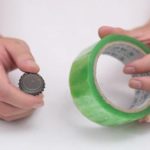You might not pay much attention to the caps on your beer or soda bottles, but have you ever noticed that most of these caps have 21 teeth? Why 21, you might ask? Let’s find out!
1 An Introduction to the Crowned Bottle Cap
To answer this question, we have to go back to the 1980s to understand the origin of the crowned bottle cap often found on beer and soda bottles.
In the 1880s, carbonated soft drinks became popular, but there was a challenge in transporting these beverages as the carbonation tended to escape, affecting the quality of the product.
Back then, bottle caps were quite primitive, made of wood, porcelain, or even metal, but they weren’t very effective.

However, an American inventor by the name of William Painter revolutionized the industry by inventing the Crown Cork bottle cap.
Since 1892, the soft drink industry has never been the same. The Crown Cork, with its wavy edge design, has become the standard for bottled beverages.
2 The Significance of the 21 Teeth on Bottle Caps
Interestingly, the number 21 doesn’t hold any particular significance. In fact, William Painter’s original design had 24 teeth along with a liner to prevent the liquid from coming into contact with the metal and causing rust.

However, this design made it difficult to open the bottles. After further research and experimentation, the number of teeth was reduced to 21 for the following reasons:
-
First, according to the three-point rule in physics, an object supported at three points is more stable and secure. Therefore, the number of teeth on the cap had to be a multiple of three, and 21 fits the bill.
-
Secondly, the 21 teeth help to create a better seal, preventing gas from escaping and preserving the carbonation in soft drinks or the liquid inside the bottle.

-
Lastly, both beer and soda are liquids, and opening the bottle incorrectly can lead to uneven pressure release, which can be dangerous. The wavy design of the 21-tooth cap increases friction, making it easier and safer to open the bottle.
Today, bottle caps have evolved from metal to PVC plastic, and the number of teeth has also decreased. However, the wavy edge design has been retained.
An interesting trick to open a bottle is to use a door frame. According to the principle of leverage, you can place the teeth of the bottle cap against the edge of the frame and tilt the bottle; the cap will pop right off!
So, there you have it! The reason why bottle caps have 21 teeth and their significance. We hope you found this information intriguing and useful.


































